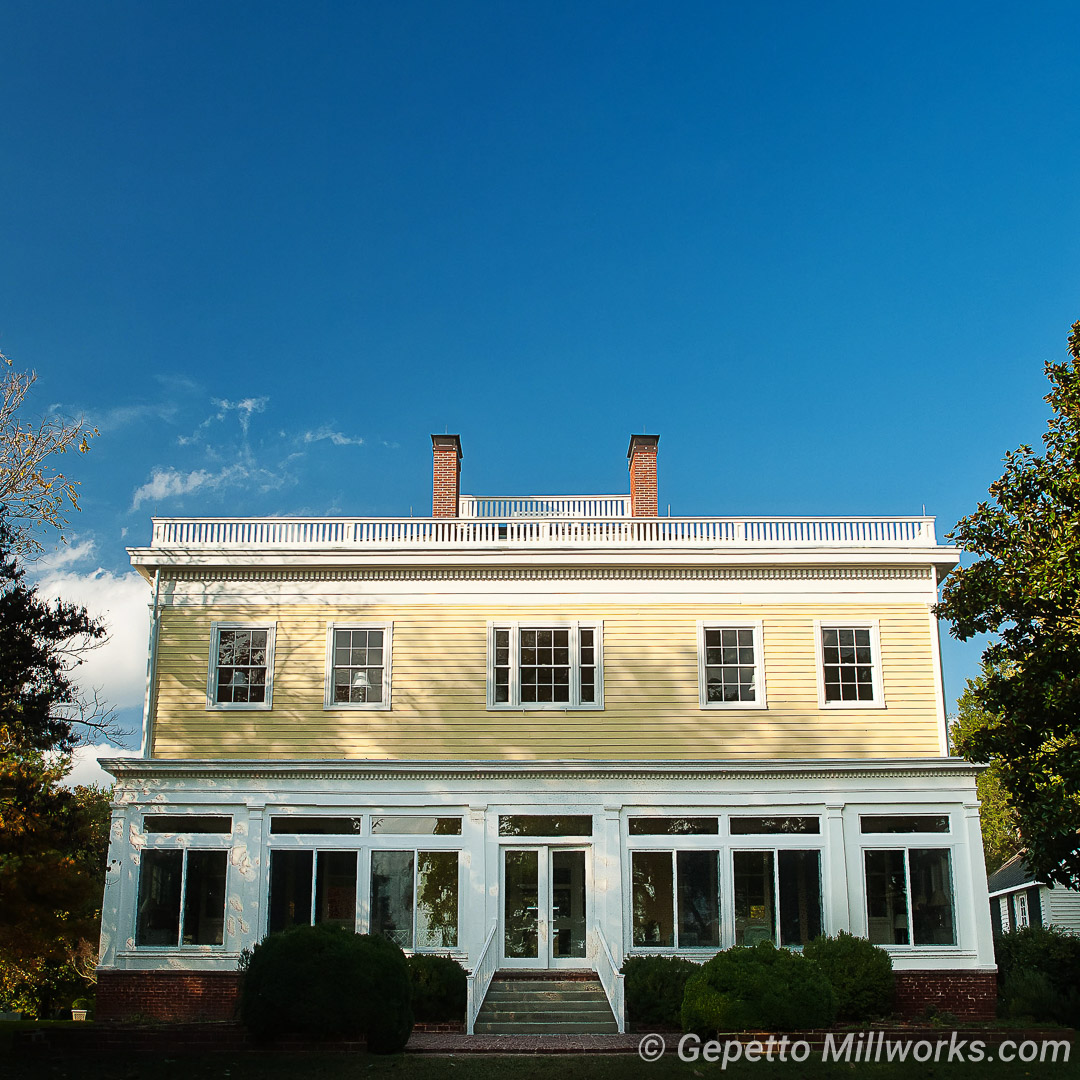Wood has been an integral part of architectural construction throughout history, particularly in the construction of historic homes in Virginia. From the elegant symmetry of Georgian architecture to the refined simplicity of Federal design and the artisanal charm of Craftsman homes, the use of wooden building materials has played a significant role. In this exploration, we delve into the wooden building materials that define these architectural styles, highlighting their significance and the relevant architectural millwork terms associated with them.
Georgian Architecture (1760-1820)
Georgian architecture, prominent in Virginia from the mid-18th century, is characterized by its symmetry, proportion, and classical details. The wooden building materials used in Georgian homes reflect the grandeur and sophistication of the style.
Clapboard Siding: One of the most common exterior siding materials in Georgian homes, clapboard siding consists of long, narrow wooden boards overlapping horizontally. This siding provides durability and weather resistance while contributing to the architectural symmetry.
Sash Windows: Featuring multiple panes of glass divided by wooden muntins, sash windows are typical in Georgian architecture. These windows often incorporate architectural millwork terms such as sills, sashes, and glazing bars, enhancing both functionality and aesthetic appeal.
Crown Molding: Crown molding, also known as cornice molding, adorns the junction between walls and ceilings, adding elegance and visual interest to Georgian interiors. Its intricate profiles, including dentil molding and egg-and-dart motifs, demonstrate the craftsmanship of the period.
Federal Architecture (1780-1820)
Federal architecture emerged during the late 18th and early 19th centuries, characterized by its refined simplicity and emphasis on symmetry and proportion. Wooden building materials in Federal homes exhibit a blend of neoclassical elements and delicate detailing.
Pilasters: Wooden pilasters, often flanking doorways and windows, are key features of Federal architecture. These vertical columns, with their flat, rectangular profiles and subtle ornamentation, impart a sense of classical elegance to facades.
Fanlights: Above entry doors, fanlights featuring intricate wooden tracery became popular in Federal homes. These semi-circular or elliptical windows, adorned with delicate wooden mullions and glazing bars, illuminate interiors while adding decorative flair.
Wainscoting: Interior wainscoting, comprising wooden panels applied to the lower portion of walls, is a characteristic feature of Federal design. Raised or recessed paneling, often accompanied by chair rails and baseboards, contributes to the architectural refinement of rooms.
Craftsman Architecture (1905-1930)
Craftsman architecture, a reaction against the ornate styles of the late 19th century, emerged in the early 20th century with an emphasis on craftsmanship, natural materials, and simplicity. Wooden building materials in Craftsman homes reflect a commitment to artisanal quality and organic beauty.
Shingle Siding: Craftsman homes frequently feature exterior walls clad in shingle siding, showcasing the natural texture and warmth of wood. These handcrafted wooden shingles, often left unpainted to weather gracefully, contribute to the rustic charm of Craftsman architecture.
Exposed Beams: Interior spaces in Craftsman homes often boast exposed wooden beams, highlighting the structural integrity and craftsmanship of the building. These beams, typically crafted from sturdy hardwoods such as oak or maple, add character and visual interest to ceilings.
Built-in Cabinetry: Craftsman interiors often incorporate built-in wooden cabinetry, reflecting the movement’s emphasis on functionality and simplicity. These custom cabinets, featuring clean lines, solid construction, and handcrafted details, provide both storage solutions and architectural focal points.
In the evolution of architectural styles in Virginia from the Georgian period through the Federal era to the Craftsman movement, wooden building materials have remained central to the construction and character of historic homes. From clapboard siding and sash windows in Georgian architecture to pilasters and fanlights in Federal design, and from shingle siding and exposed beams in Craftsman homes, these materials embody the craftsmanship, elegance, and enduring beauty of Virginia’s architectural heritage. Understanding the architectural millwork terms associated with these wooden elements enhances appreciation for the rich history and craftsmanship preserved within these historic homes.












































































